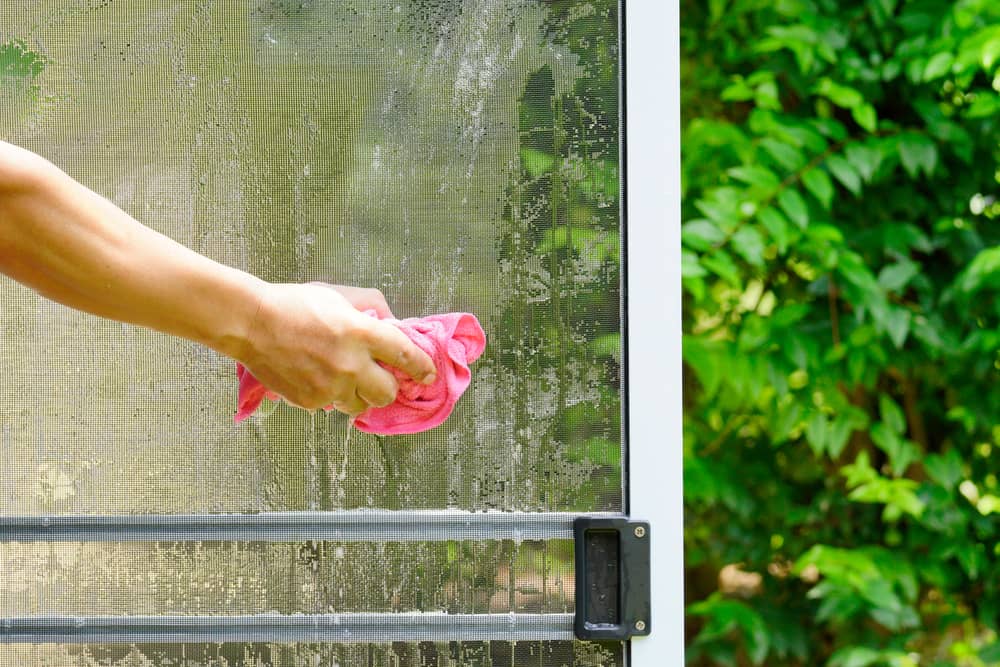We all have chores we’d rather avoid doing — washing laundry, scrubbing grout, and, yes, cleaning fly screens.
Many of us would prefer that a fly screen clean itself, but the reality is we’ve got to do it.
For removable fly screens, it’s simple enough: just remove them from their casings and gently rinse them with a garden hose.
For fixed screens, you can gently use a damp cloth soaked in warm, soapy water.
In between cleanings, use a handheld vacuum cleaner with a brush attachment to remove grit and dirt.
(While you’re at it, don’t forget to clean the rest of your home — or get a cleaning service to clean for you.)
Here’s how to clean fly screens — removable, retractable or fixed — easy-peasy.
Are Fly Screens and Security Screens the Same?
No, fly screens and security screens are not identical.
While both protect your home, fly screens primarily keep out insects and bugs, while security screens are designed to deter burglars.
A cleaning professional will tell you that the mesh used in security screens is usually thicker and more robust than fly screens, which may affect how you clean them.
You might also call a fly screen an “insect screen” since that’s what it does!
Why Clean Fly Screens?
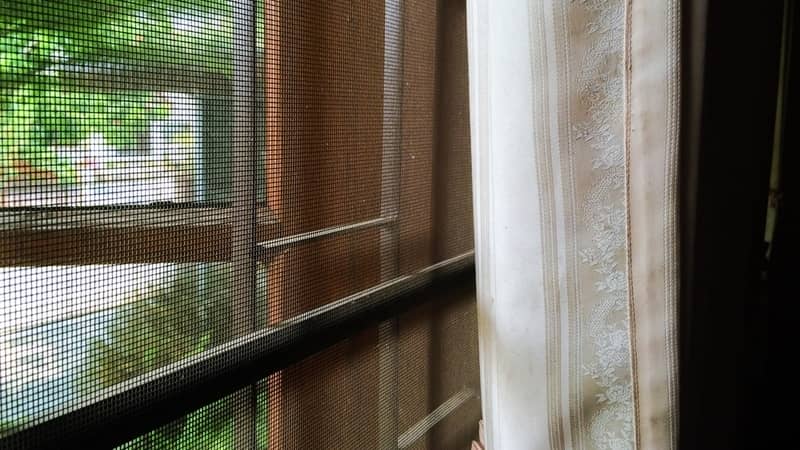
Fly screens can accumulate dust, pollen, and other pollutants, affecting the air quality in your home.
Over time, dirt buildup can also reduce visibility and the amount of natural light entering your home.
Clean fly screens are a benefit – they prevent pests from coming in and lessen the amount of dirt entering your home.
In some rural cases, they can even prevent birds from flying inside.
On the other hand, dirty fly screens can act as a health hazard in your home.
They prevent clean airflow and can collect dust, which then enters your house.
They also visually look unappealing, with dust clinging to the wires.
If you are a tenant renting a unit or home, clean fly screens are necessary for your rental property inspection.
What Supplies Do I Need to Clean Fly Screens?
Cleaning fly screens starts with having the right tools on hand.
- Soft-bristled brush or handheld vacuum: This will help remove loose dust and debris from the screen before wet cleaning.
- Mild dish soap: A gentle cleaner that won’t damage or discolour your screens.
- Warm water: To be mixed with soap for a gentle cleaning solution.
- Soft cloth or sponge: Preferably lint-free, to apply the cleaning solution and scrub the screens.
- Garden hose or spray bottle: Useful for rinsing off the soap solution, especially for removable screens.
- Soft towel or microfiber cloth: For drying the screens after washing. This won’t leave water spots or streaks.
- (Optional) Old toothbrush: This can be useful for getting into the corners or particularly stubborn spots that a larger brush or cloth might miss.
How to Clean Removable Fly Screens Effectively
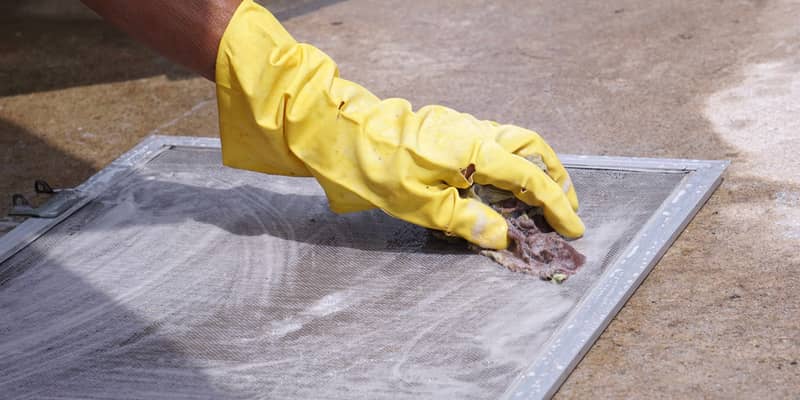
Removable fly screens offer the convenience of easier cleaning access.
With the right cleaning approach, your fly screens can give you an unobstructed view while keeping the pesky bugs out.
Preparation
First, remove the screens gently from their frames.
Lay them on a flat surface, preferably outdoors or in a well-ventilated area.
If you can’t clean them outdoors, place towels on the floor and put the insect screen frames there.
Brush the removable screens
Use a soft brush to remove any loose dust or debris.
This means you won’t push dirt further into the screen when you move on to wet cleaning.
Mix a cleaning solution
In a large basin or bucket, mix warm water with a few drops of mild dish soap.
Stir until it forms a soapy solution.
Wash
Dip a soft cloth or sponge into the solution and gently scrub the screen.
Make sure to get into all the corners and crevices.
Rinse the screens
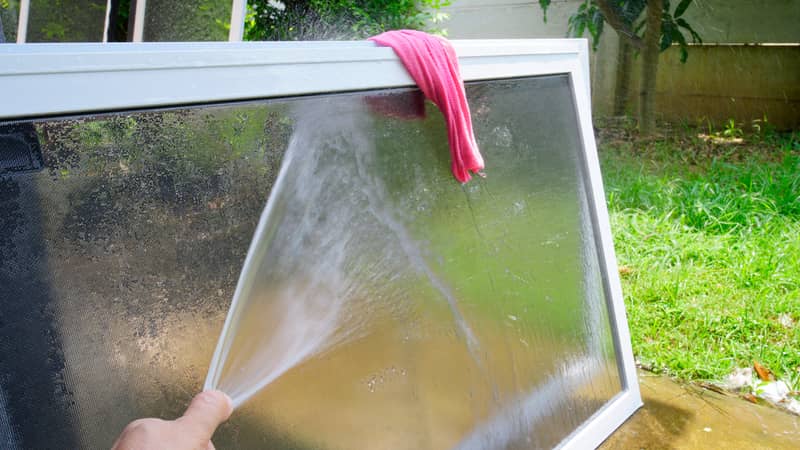
Gently spray the screens with a garden hose, ensuring all the soap gets washed away.
Let your clean fly screen dry
Allow the screens to air dry completely. Once dry, reattach them to their frames.
Clean the window sills and tracks
While the screens are removed, don’t forget to clean the door tracks and window sills!
Use an old toothbrush or a vacuum with a narrow nozzle.
How to Clean Retractable Fly Screens
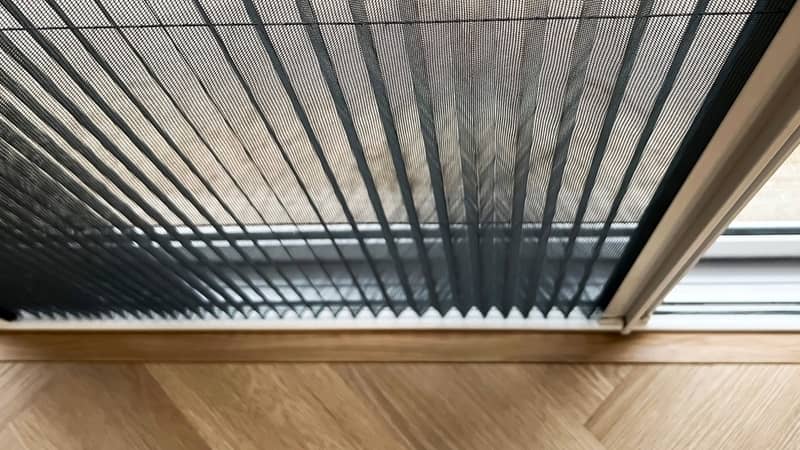
Retractable fly screens are a modern solution to old problems, but they still accumulate dirt over time.
Because their design is unique, you’ll need to do a slightly different cleaning method.
Extend the retractable fly screen
Pull out the retractable screen to its full extent.
Make sure it’s taut but not overly stretched.
Vacuum the dirty fly screen
Use a handheld vacuum with a brush attachment to get rid of surface dirt and debris.
Wipe with a soft, damp cloth
Mix warm water and mild detergent and soak a soft cloth.
Wring out excess water from the cloth, and gently wipe the fly screen down.
This helps in removing any stubborn dirt or grime.
Let dry
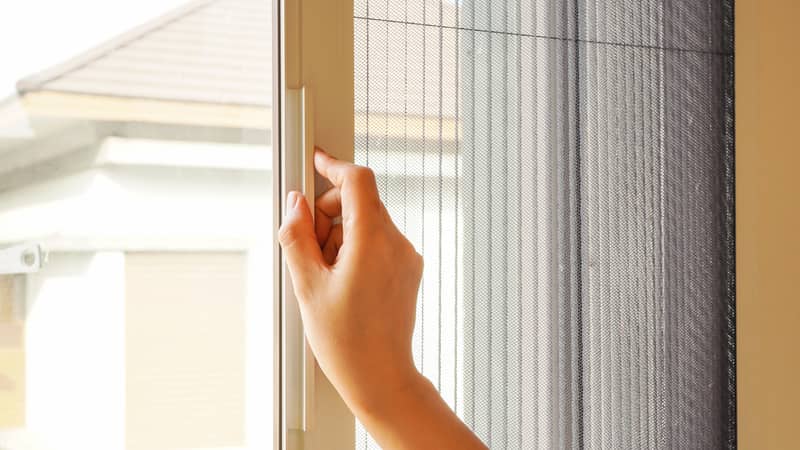
Allow the retractable screen to air dry.
Check that the screen is fully dry before retracting to prevent mould or mildew buildup.
How to Clean Fixed Fly Screens
Ever looked outside your door only to have your view blocked by dirty fly screens?
Well, if you follow our steps below, it’ll be the last time you ever see that.
Dust your fly screen
Start by dusting off the surface with a brush or vacuum cleaner to remove any loose dirt or debris.
Prepare a cleaning solution
Mix a few drops of mild dish soap in warm water.
Use a soft cloth
Soak a soft cloth in the solution and wring out any excess water.
Wipe down the fly screen
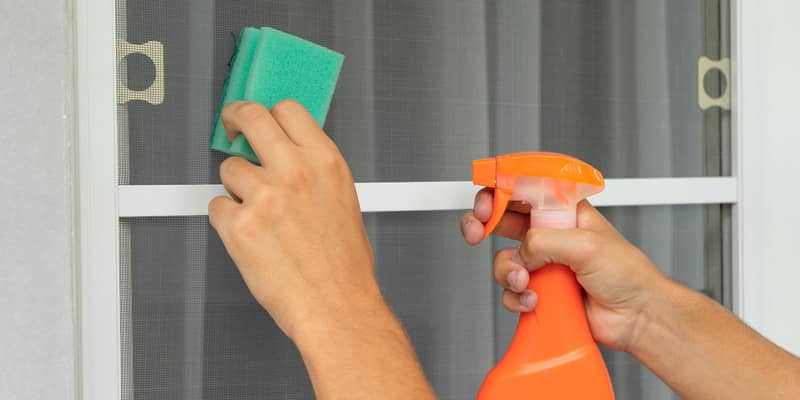
Gently clean the screen, ensuring you cover every inch of it.
Use a soft toothbrush for corners or stubborn spots.
Gently rinse your fly screen
If accessible, you can use a spray bottle filled with water to rinse off the soapy solution gently, or you can dampen a clean cloth with water and wipe down the screen.
Dry the fly screens thoroughly
Allow the screen to air dry, or use a clean, dry towel to pat down any excess moisture.
How Often Should You Clean Fly Screens?
Generally, you should clean fly screens every 3–6 months.
However, if you live in an area with high pollution or have trees shedding pollen nearby, you might need to do it more frequently.
FAQs About Cleaning Fly Screens
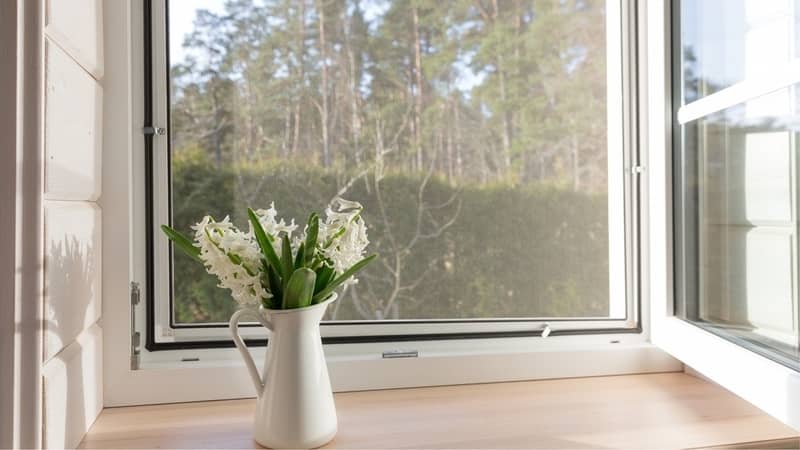
How do you clean fly screens without removing them?
You can use a handheld vacuum with a brush attachment to get rid of loose debris from fly screens.
Then, wipe down with a damp cloth soaked in warm water and mild dish soap.
What is the best thing to clean window screens with?
A mixture of warm water and a gentle dish detergent works best for most window screens.
For tougher stains, a cleaning professional might suggest specific screen cleaners.
Can you use WD-40 to clean fly screens?
While WD-40 can be used for various cleaning tasks, it’s not recommended for fly screens.
It might leave a residue that can attract more dust and dirt. Always stick to mild soapy water for best results.
Let Your Worries Fly Away
With the right tools and methods, you can keep your screens clear and functional.
Don’t let dirty screens hold you back; let your worries fly away, and enjoy a clearer view of the world outside!

